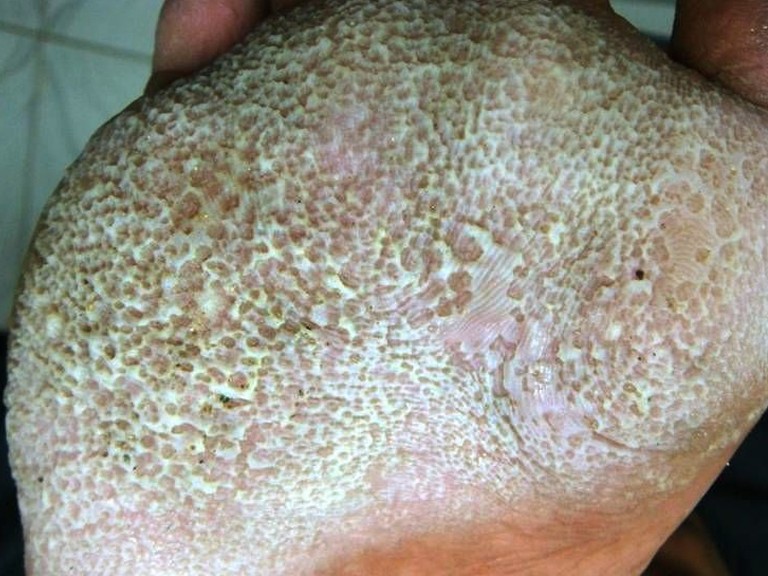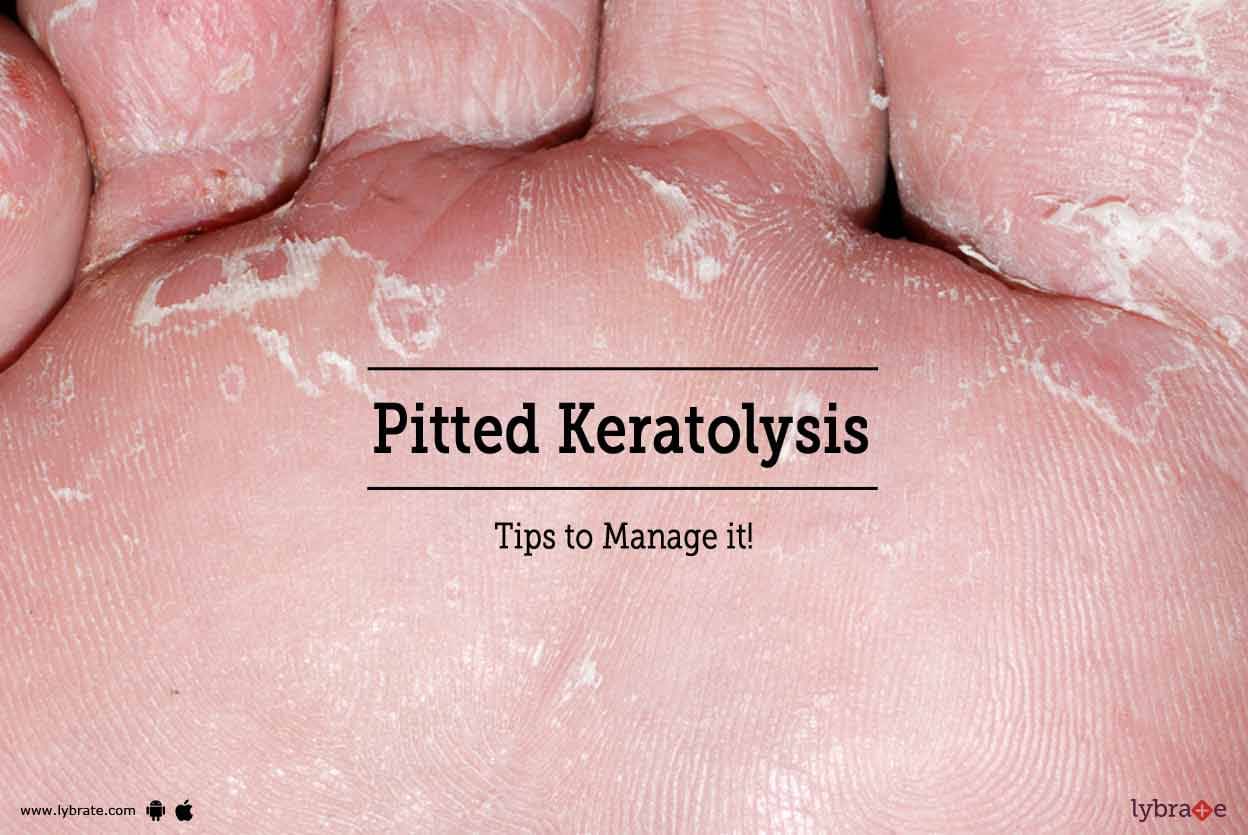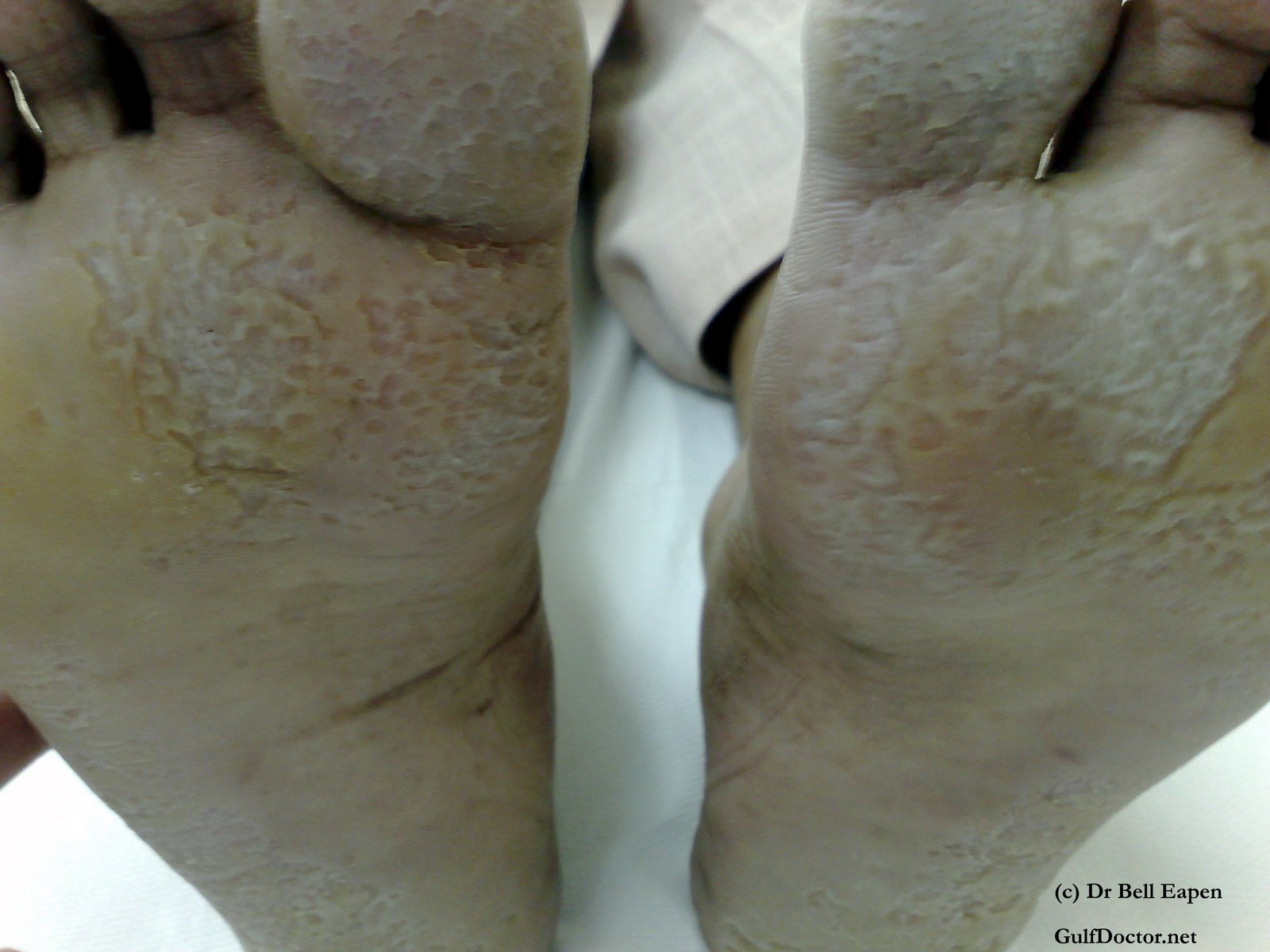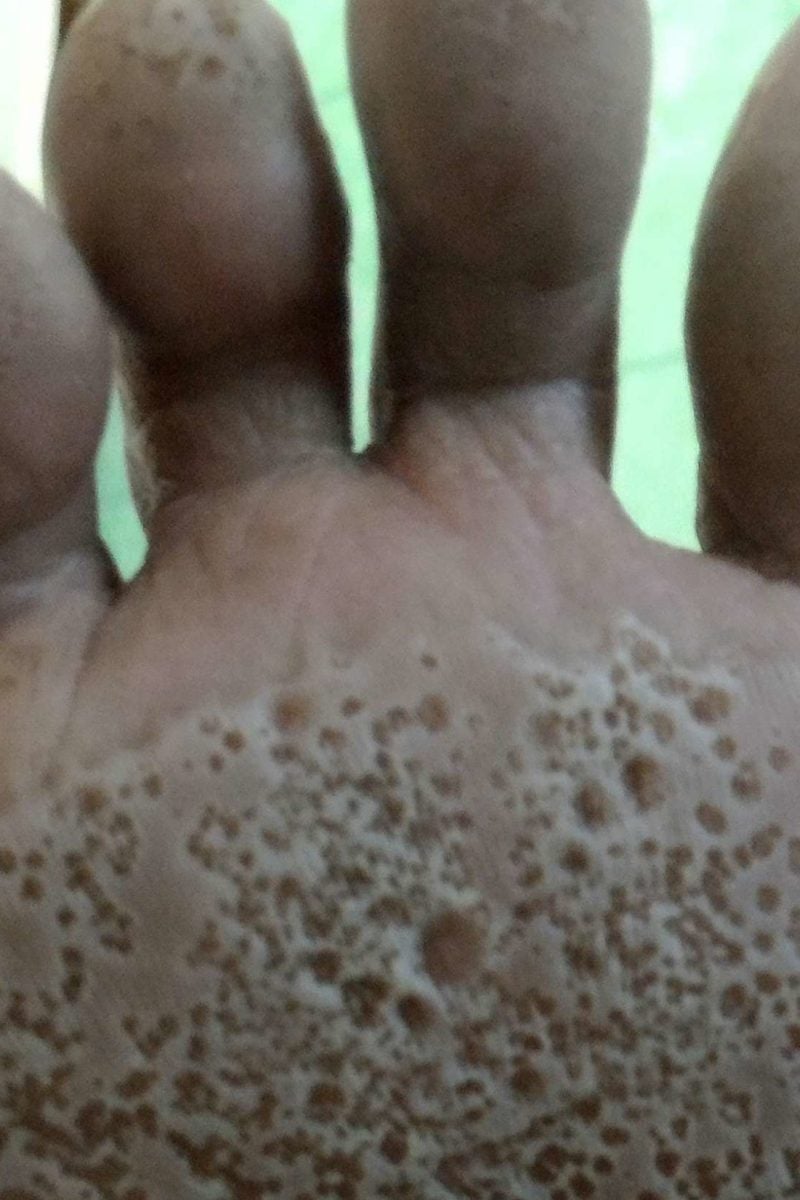
Condition Spotlight Pitted Keratolysis Watsonia Podiatry
Treatment Pitted keratolysis can be successfully treated with topical antibiotics such as fusidic acid cream, or with oral erythromycin. It will quickly recur unless the feet are kept dry. Advice to the patient should include: Wear boots for as short a period as possible Wear socks which effectively absorb sweat (cotton and wool)

Easy way to cure pitted keratolysis (cara menyembukan kaki rayapan) YouTube
Pitted keratolysis is a bacterial skin infection that causes a foul odor and itchiness. It most often affects the skin on your feet. You're most at risk of developing pitted keratolysis if you have sweaty feet and wear shoes with limited airflow. Advertisement Cleveland Clinic is a non-profit academic medical center.

Tips to Manage Pitted Keratolysis By Dr. Sandesh Gupta Lybrate
Anderson Bryan | March 13, 2019 Are You Confident of the Diagnosis? Characteristic findings on physical examination Most individuals will present with a complaint of malodorous feet. On inspection the soles will show small 1-3 mm pits within the epidermis (Figure 1).

Pitted Keratolysis Causes, Symptoms, Treatment and Prevention
Pitted Keratolysis Treatment Options Treatment options for pitted keratolysis include topical antibiotics, foot care , and advanced treatments in severe cases. By adhering to a prescribed treatment plan and implementing necessary lifestyle changes, individuals can have their pitted keratolysis treated, alleviate the symptoms, and avert its recurrence.

Pitted keratolysis Causes, symptoms, and how to treat it
Skin Remedies, Skin Care Pitted Keratolysis is a bacterial infection characterized by pits on the skin. Often, this condition affects the feet and palms of the hands. Even so, the infection is common on the feet because the bacteria thrive in a moist environment such as that created by socks and shoes.

pitted keratolysis home treatment pictures, photos
Come and check everything at a surprisingly low price, you'd never want to miss it. Shop Like A Billionaire, Come & Check Everything At A Surprisingly Low Price.

Pitted Keratolysis Tips to Manage it! By Dr. Nitin Jain Lybrate
Clinically, pitted keratolysis is characterized by malodor and multifocal, discrete, superficial crateriform pits and superficial erosions primarily affecting pressure-bearing areas of the plantar surface of the feet ( picture 1A-D ). Topical antibiotic therapy usually leads to resolution of the disease.

Pitted keratolysis Dermatologists Sans Borders
Pitted keratolysis is a skin condition affecting the soles of the feet and, occasionally, the palms of the hands. It is caused by a bacterial infection of the skin. Usually there is no pain, burning, or itch associated with the infection, but these symptoms may occur. Additionally, the affected areas may occasionally give off a foul odor. Content

What Is Pitted Keratolysis? Causes Symptoms Treatment and Prevention YouTube
Pitted keratolysis is a skin disorder characterized by crateriform pitting that primarily affects the pressure-bearing aspects of the plantar surface of the feet and, occasionally, the palms of.

Pitted Keratolysis Treatment at Home Health USAmeganews
Topical benzoyl peroxide gel 2.5% and 5% can both treat pitted keratolysis, according to study results presented at the American Academy of Dermatology virtual meeting."Pitted keratolysis (PK.

Pitted keratolysis causes, prevention and treatment
At-Home Treatments for Pitted Keratolysis If you're dealing with pitted keratolysis, there are several at-home treatments you can try to alleviate your symptoms: Keep your feet clean and dry. Wash your feet with soap and water every day, and dry them thoroughly afterward. Use a foot powder to absorb excess moisture. Wear breathable shoes and socks.

Pitted keratolysis
Pitted keratolysis, also known as keratolysis plantare sulcatum or ringed keratolysis, is a superficial bacterial skin infection characterised by crater-like pits and malodour. It typically affects pressure-bearing areas on the soles of the feet, although the palms are rarely affected. This condition is very treatable with a good prognosis.

Pitted keratolysis
Treatment FAQs Pitted keratolysis is a non-contagious bacterial infection that affects the skin. The infection typically develops on the soles of the feet in people that suffer from excessive sweat, but it can also affect the palms of the hands. This article discusses the symptoms, causes, and treatment options for pitted keratolysis.

Pitted keratolysis Causes, symptoms, and how to treat it
Pitted keratolysis is a superficial, and sometimes malodorous, infection of the soles of the feet, characterised clinically by crateriform pitting. It is commonly associated with sweaty feet. This condition is set out as follows: Aetiology History Clinical findings Images Management Aetiology

pitted Keratolysis Note On Palms & Soles Pitted keratolysis, Remedies, Dermatology
Treatment for Pitted Keratolysis. Twice daily applications of topical antibiotics such as Erythromycin or Bactroban creams or gels. Use antibacterial soap on your feet twice daily. Limit use of occlusive footwear or alternate shoes to allow them to dry out. Change socks regularly. Anti-perspirant deodorant applied to feet may limit hyperhidrosis.

Pitted Keratolysis Causes, Symptoms, Treatment and Prevention
Disclaimer Don't let pitted keratolysis ruin your confidence. Learn how to treat this bacterial skin infection with these simple and effective tips. From keeping your feet clean and dry to using topical antibiotics and foot powders, discover the best ways to combat pitted keratolysis. Consult with a doctor if symptoms persist.